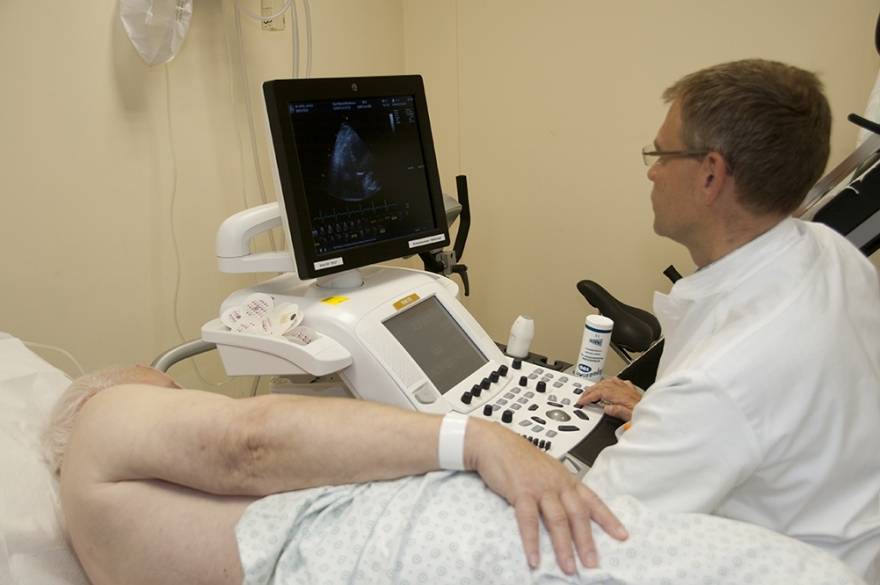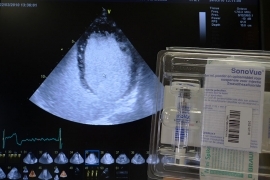Contrast echocardiography
What is it?
What is it?With an echocardiography, contrast fluid is sometimes injected intravenously in one of the veins in the arm. Contrast fluid allows for the detection of certain heart abnormalities.
Preparation
PreparationAfter you have undressed from the waist up, you will lie down on the table. Three electrodes on your chest are used to monitor your heart rhythm. To better visualise the heart, you will be asked to lay on your left side. The room will be darkened to allow the cardiologist the best possible view of the echocardiogram.
To administer the contrast fluid, an IV will be placed in your arm.
Before administering the contrast agent, the physician will check whether you have contraindications that would prevent us from administering this to you.
Test
TestTo ensure good conduction of the sound waves, a cold gel is applied to the chest. The probe is placed on various places on the chest wall to be able to view the heart from all sides. During the test, you may be asked several times to hold your breath for a few seconds. The test is pain free, and the only thing you will notice is the vibrations produced by the probe. It will take up to a maximum of 30 minutes.

Two types of contrast fluid are used.
1. Agitated saline solution.
This is a standard infusion solution (NaCl 0.9%), 8 cc of which is mixed with a small quantity of air (2 cc). This makes the chambers of the heart light up, after the injection, on the echocardiography screen. This type of contrast agent is primarily used to detect connections between the right and left heart. Since this is a combination of saline solution thoroughly mixed with a small quantity of air, this technique is completely safe.
2. Special echocardiography contrast fluid: Sonovue.
This is a commercially available contrast fluid that fills up the heart cavities, which allows for better assessment of wall motion. In certain circumstances, this product may not be used. For that reason, your physician will carefully review your chart before administering this product.

Results
ResultsAt the end of the consult, the cardiologist will discuss with you the findings of the contrast echocardiography, as well as the changes in treatment that may result.
Aftercare
AftercareAfter the test, the IV will be removed and an adhesive bandage will be placed over the injection site. No specific aftercare is required.
Centres and specialist areas
Centres and specialist areas
Latest publication date: 14/01/2024
Supervising author: Dr Provenier Frank



